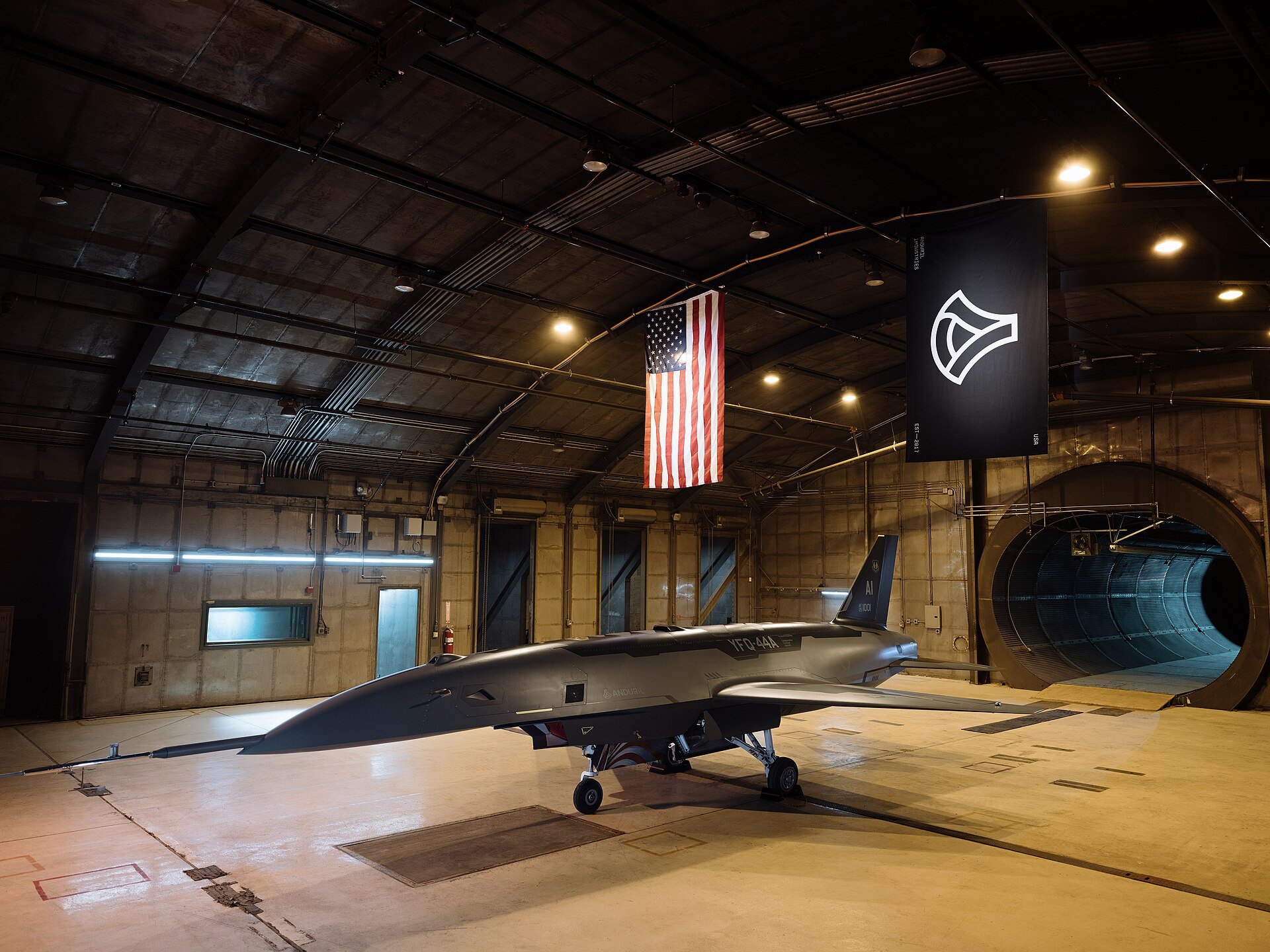Anduril has recently offered a rare glimpse into the development of its next-generation uncrewed fighter drone, known as Fury. This advanced drone is designed to operate alongside human pilots, acting as a force multiplier in the skies. The development of Fury is part of the US Air Force’s Collaborative Combat Aircraft (CCA) program, an initiative focused on creating AI-powered drone wingmen to complement future sixth-generation fighter jets. This program reflects a broader move within military aviation to blend autonomous systems with piloted aircraft, enhancing operational reach and flexibility.
The public got a detailed look at Fury through an episode of CBS’s 60 Minutes that aired on Sunday, featuring Anduril founder Palmer Luckey walking viewers through the drone’s progress. The segment took viewers inside the hangar where Fury is being assembled, offering a firsthand view of the engineers at work. In one scene, two engineers were shown bolting the wing into place, a practical step that signals the drone is nearing the final stages of assembly. The footage revealed Fury’s sleek, compact design, crafted with stealth in mind through its angular surfaces and streamlined shape. Advanced sensor pods were also visible, pointing to the drone’s ability to collect and process vital information during missions.
A concept animation aired during the broadcast brought Fury’s potential to life. It depicted three Fury drones flying ahead of a crewed fighter jet, identifying and striking a target well before the manned aircraft entered the danger zone. This scenario was explained by Anduril CEO Brian Schimpf, who told CBS, “These [Fury drones] fly out ahead of manned fighters, and they’re able to find the enemy first, able to engage the enemy well before a manned fighter has to be seen or is in range.” This capability lies at the heart of the CCA program’s goal: to use uncrewed systems to extend the range and safety of human pilots while maintaining a decisive edge in combat.
Fury is classified as a Group 5 unmanned aerial system, a category for drones weighing over 1,320 pounds, marking it as one of the largest and most capable in its class. It is powered by a single Williams FJ44-4M turbofan engine, giving it the ability to reach speeds close to Mach 1 and climb to altitudes of 50,000 feet, or 15,240 meters. These specifications make Fury a fast and agile platform, well-suited for the demands of modern air combat. The drone relies on Anduril’s Lattice software, an AI-driven system that integrates data from onboard sensors and external sources, enabling advanced processing and real-time decision-making. This blend of artificial intelligence and machine learning allows Fury to perform both autonomous and collaborative missions with precision.
The drone’s development hit a key milestone in late 2024 when Anduril completed its critical design review, paving the way for flight testing and eventual deployment. Timothy Helfrich, a senior official with Air Force Materiel Command, confirmed that both Anduril and General Atomics, another company involved in the CCA program, are progressing steadily. Speaking at a defense forum in Virginia, Helfrich said, “Both industry teammates are on the path to get to first flight in a timeline that allows us to get operational capability by the end of the decade.” When Fury officially enters service, it will carry the US military designation “YFQ-44A,” identifying it as a prototype uncrewed fighter jet.
Fury made its international debut in March at the 2025 Avalon Air Show in Australia, showcasing its multi-mission capabilities to a global audience. Anduril is not alone in the CCA program; General Atomics is also advancing its own drone concept, a variant of its Gambit family of drones. Known for their long endurance, the Gambit drones are designed to work seamlessly with next-generation aircraft, performing tasks like evading detection, relaying data, or serving as an initial line of defense. In April, Anduril and General Atomics were chosen over traditional defense giants Lockheed Martin, Boeing, and Northrop Grumman to move forward with the first increment of the CCA program. A second increment is planned for 2025, which could expand the program or refine the current designs.
The selection of Anduril and General Atomics over established competitors reflects a shift in the defense industry, where newer companies are making their mark with innovative approaches. Fury, with its modular design and advanced technology, embodies this trend. Its ability to fly ahead of manned fighters, locate and engage targets, and provide real-time data could change how air combat unfolds. The drone’s speed, altitude range, and AI-powered systems position it as a versatile tool for missions ranging from reconnaissance to direct confrontation. As it nears its first flight in the coming months, Fury stands to play a central role in the evolving partnership between human pilots and autonomous systems, potentially redefining aerial warfare for years to come.






